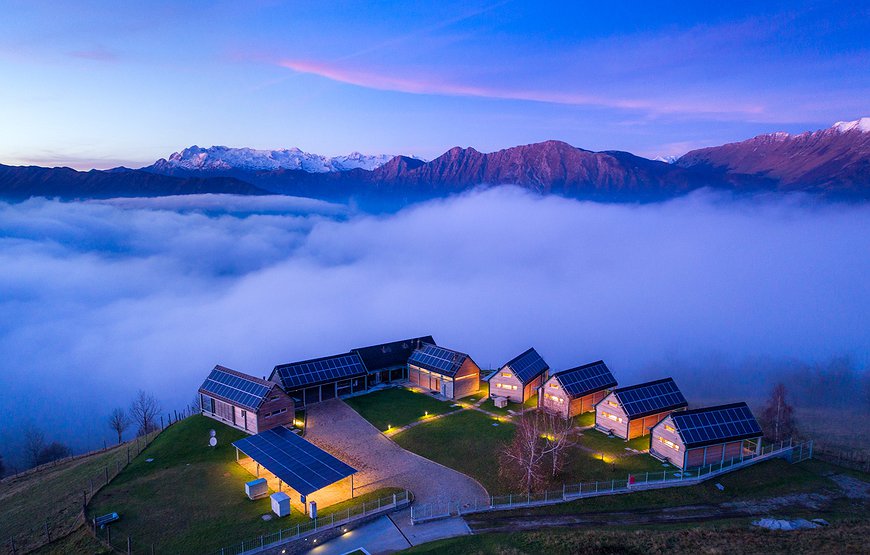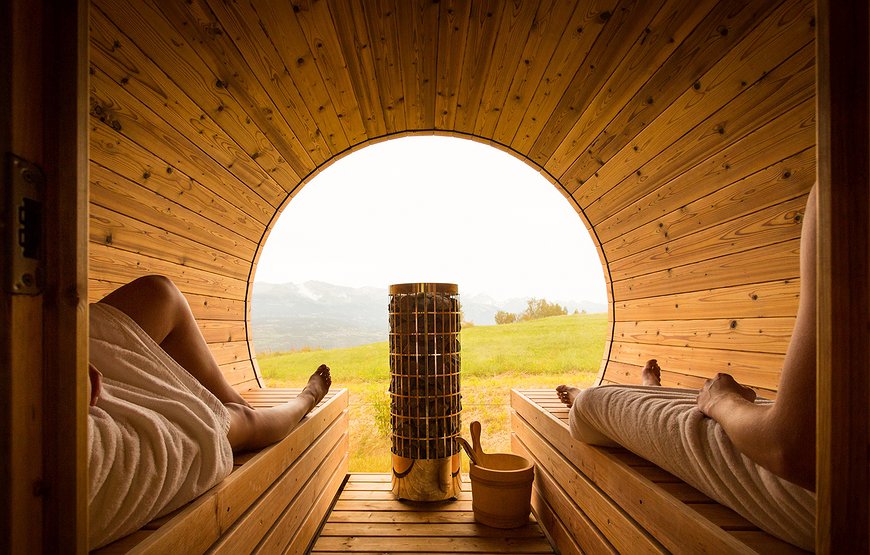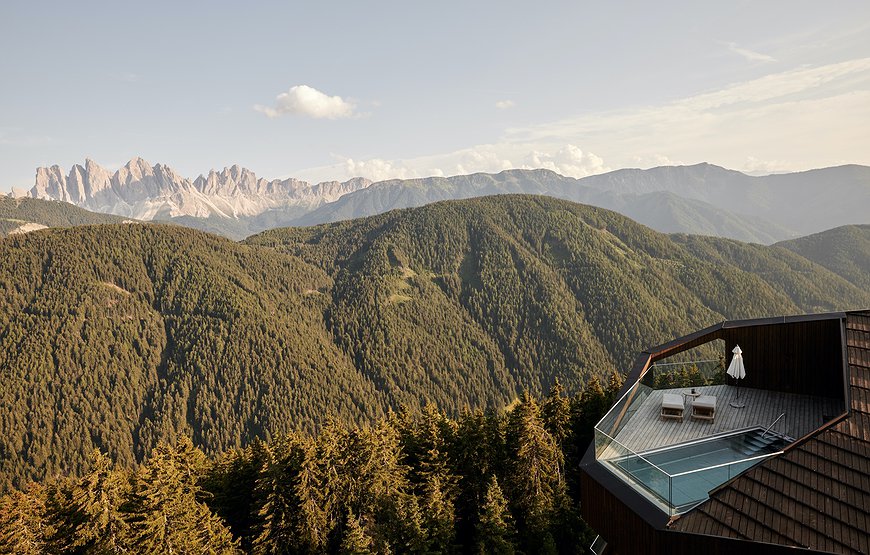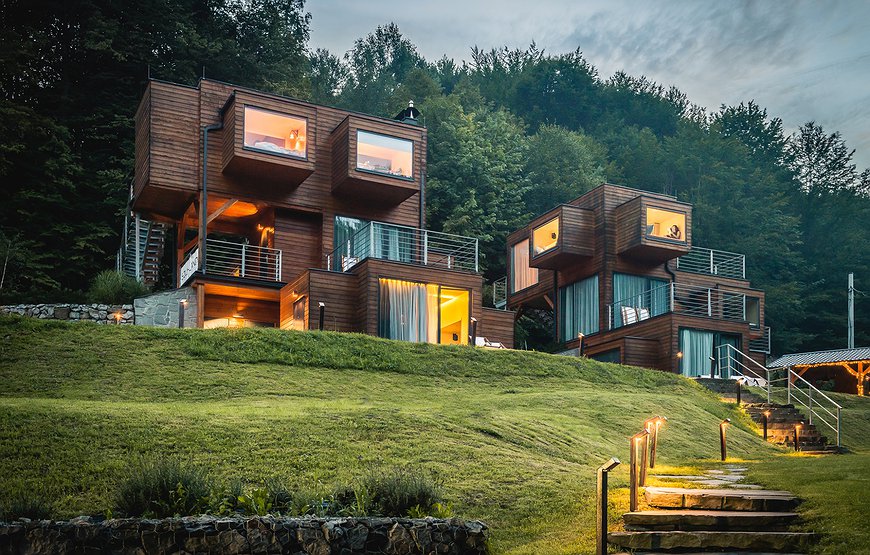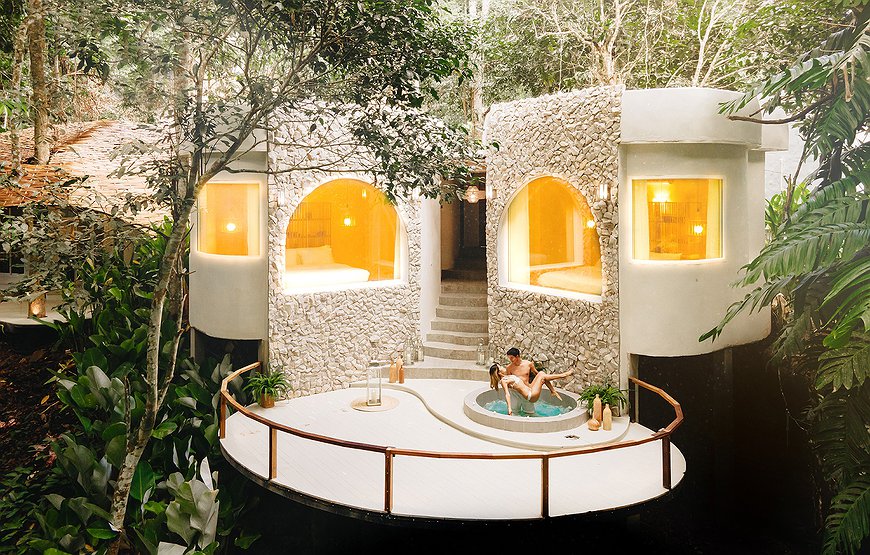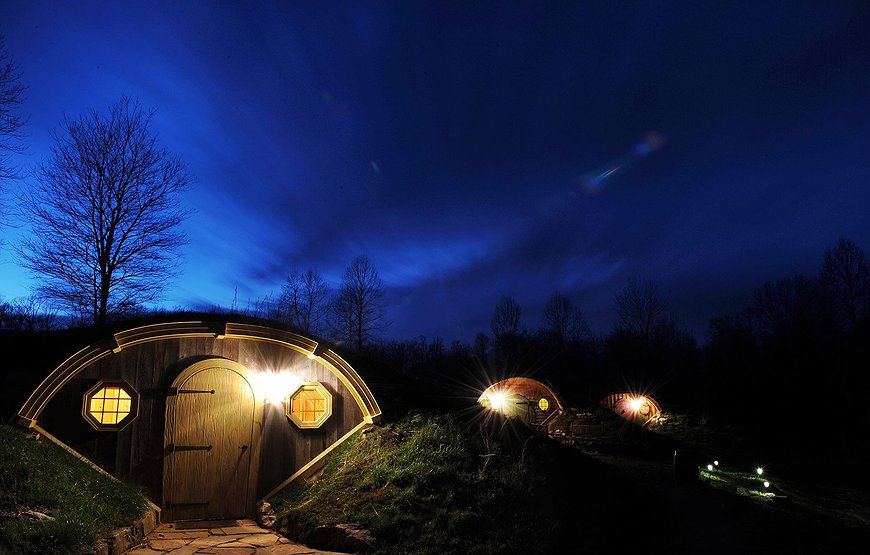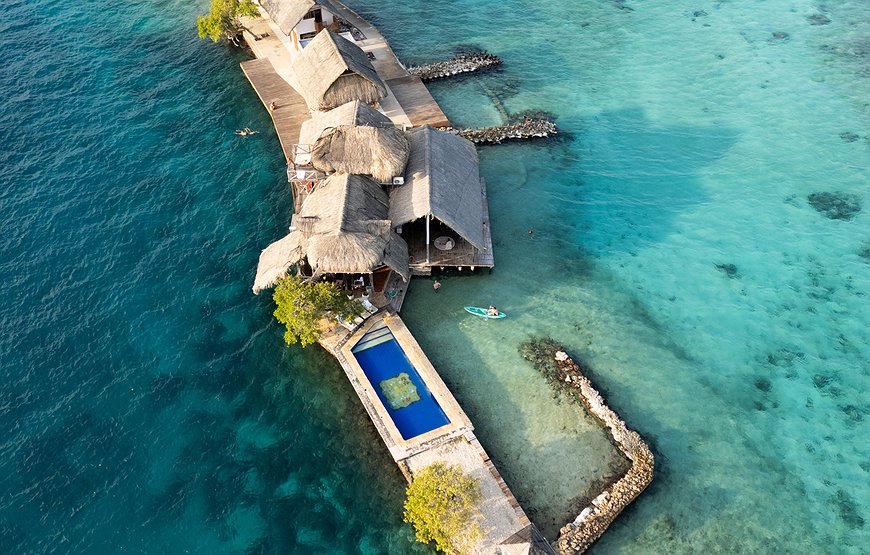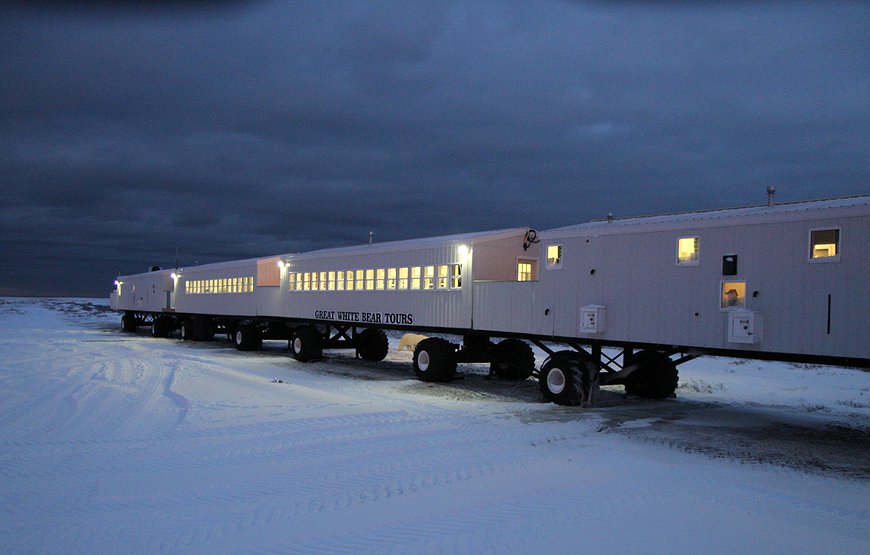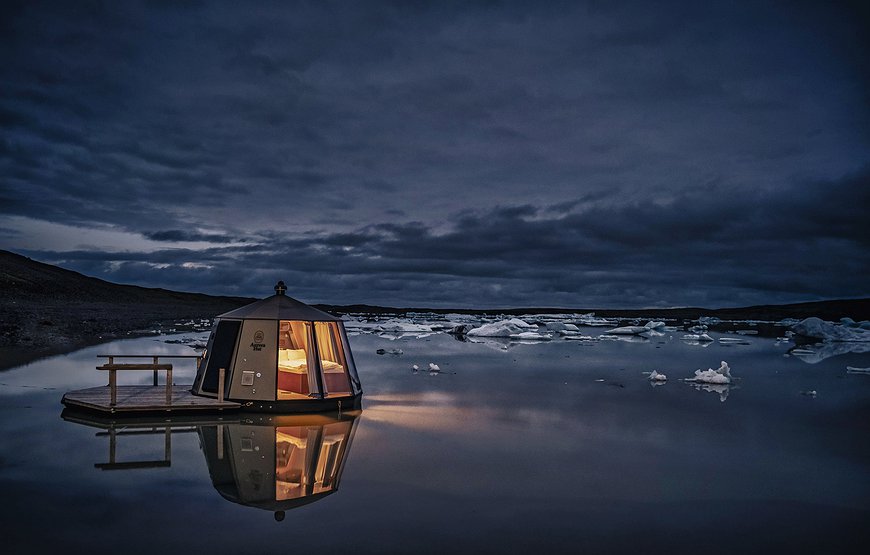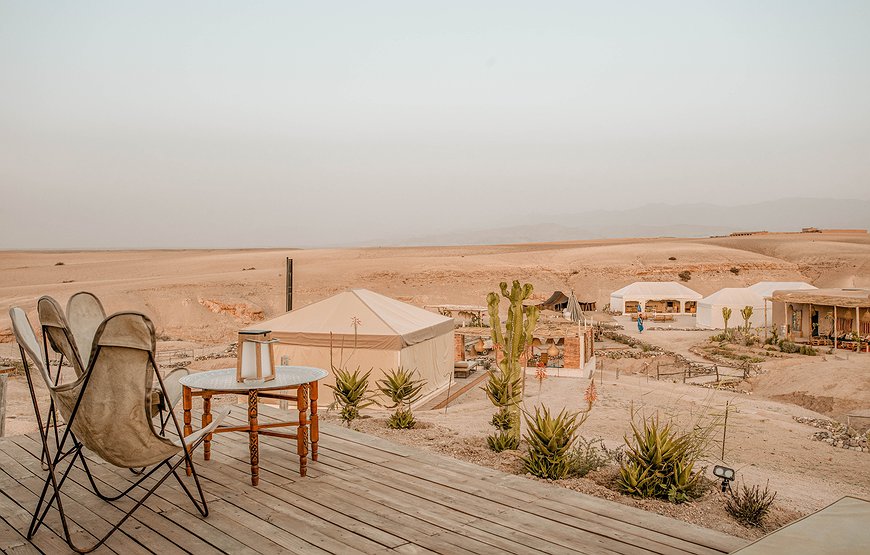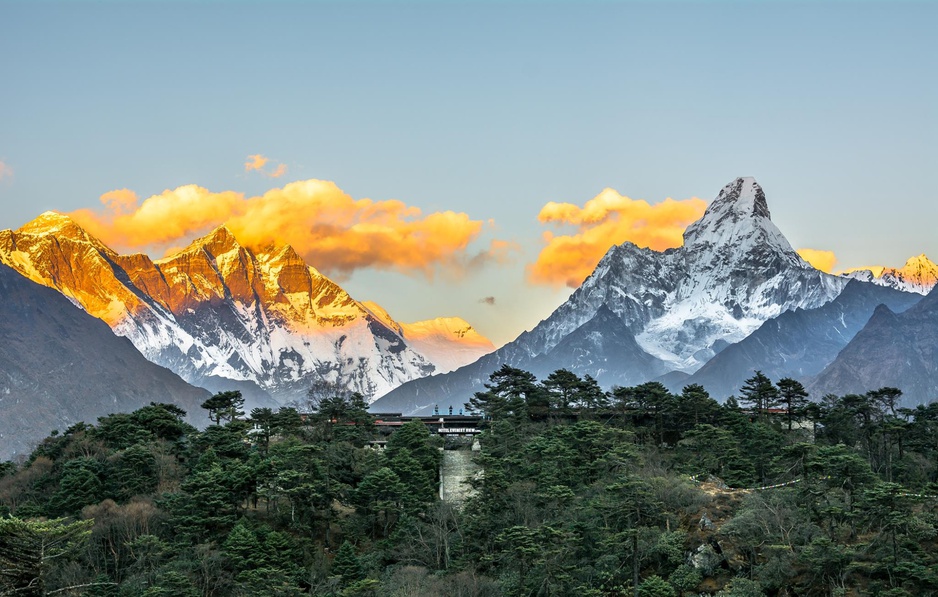
Takashi Miyahara, a Japanese-born tourism entrepreneur, came to Nepal in the 1960s and recognized the region's immense potential thanks to its natural beauty and cultural attractiveness.
As a visionary, he paved the way for Himalayan hospitality never seen before. The bold fusion of a high altitude setting and a modern hotel's comfort and service level has set a new benchmark for future entrepreneurs.
Before the existence of Hotel Everest View, if you craved such breathtaking panorama, you had to stay the night in a modest guesthouse - or a tent.
Hotel Everest View's effort to build at the high altitude of the Himalayan region was so spectacular that there is a whole book dedicated to it.
The "A Ray of Light in the Himalayas: Building the Hotel Everest View" goes in great length about the challenge to construct a hotel building in a remote part of the world only accessible via helicopters and hiking.
The hotel has been listed in the Guinness Book of World Records since 2004 as the highest-placed hotel in the world at 13,000 feet or 3,880 meters. However, unofficially, at least two hotels have been built even higher since then.
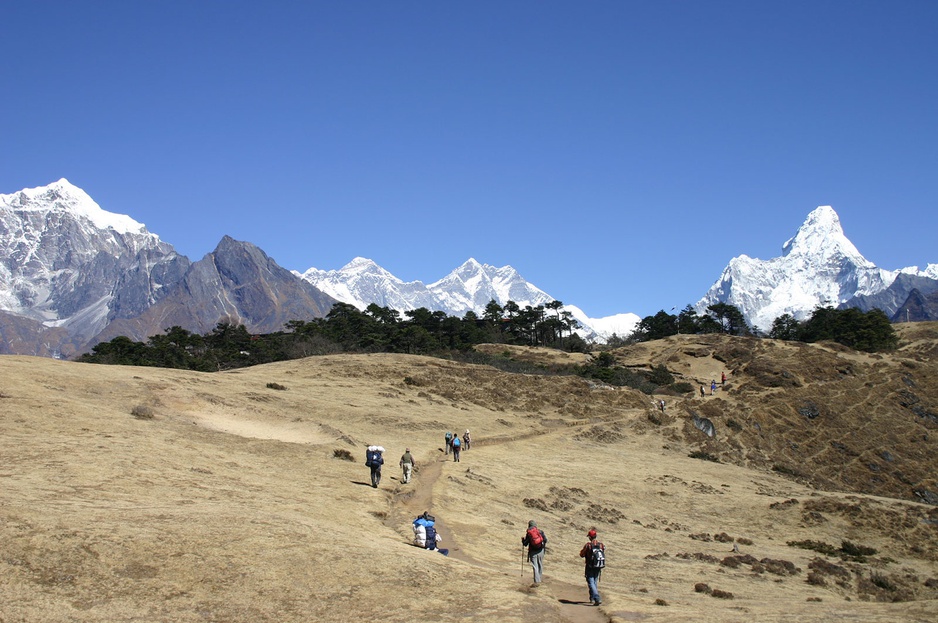
The flights land at Lukla, and it takes two and a half days to reach the hotel via trekking. Or, if your budget allows, you can fly in by helicopter directly from Kathmandu.
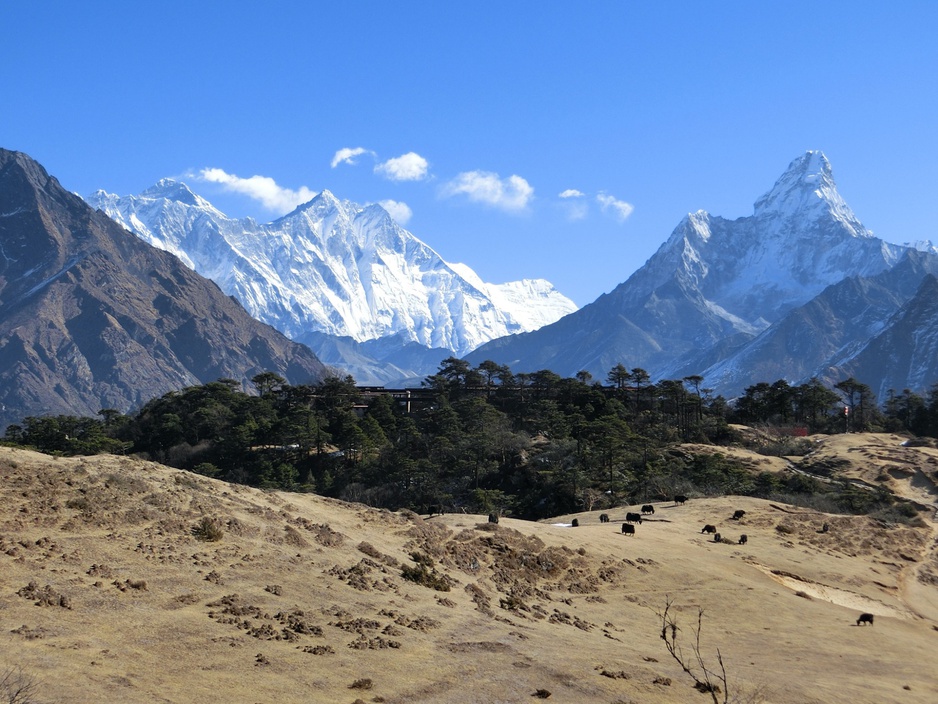
The path leading up to Hotel Everest View is dotted with beautiful juniper bushes and Gentiana flowers. It's a steep but picturesque hike up that's worth the effort.
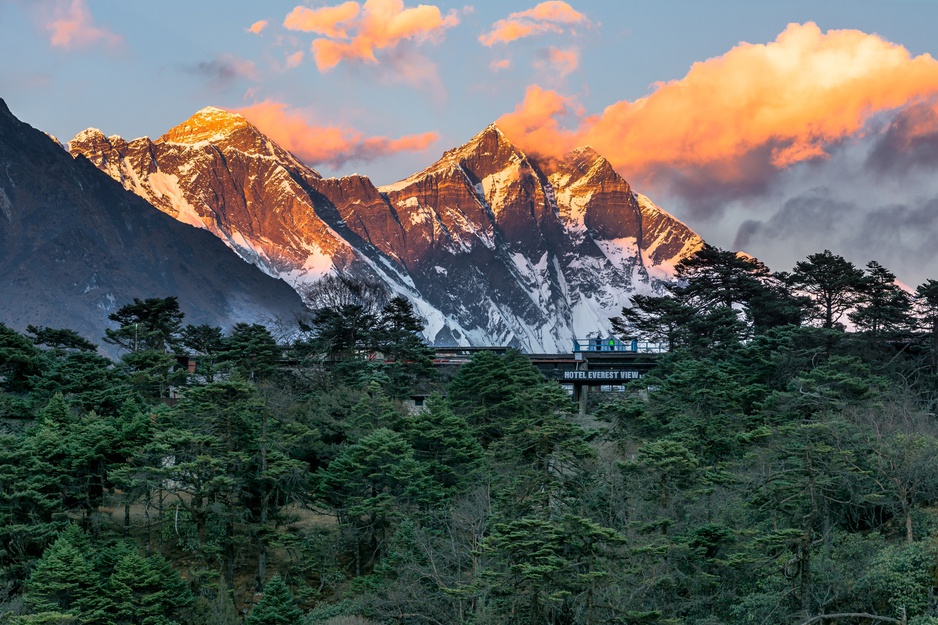
Takashi Miyahara and his team finished the challenging construction project of Hotel Everest View in 1971.
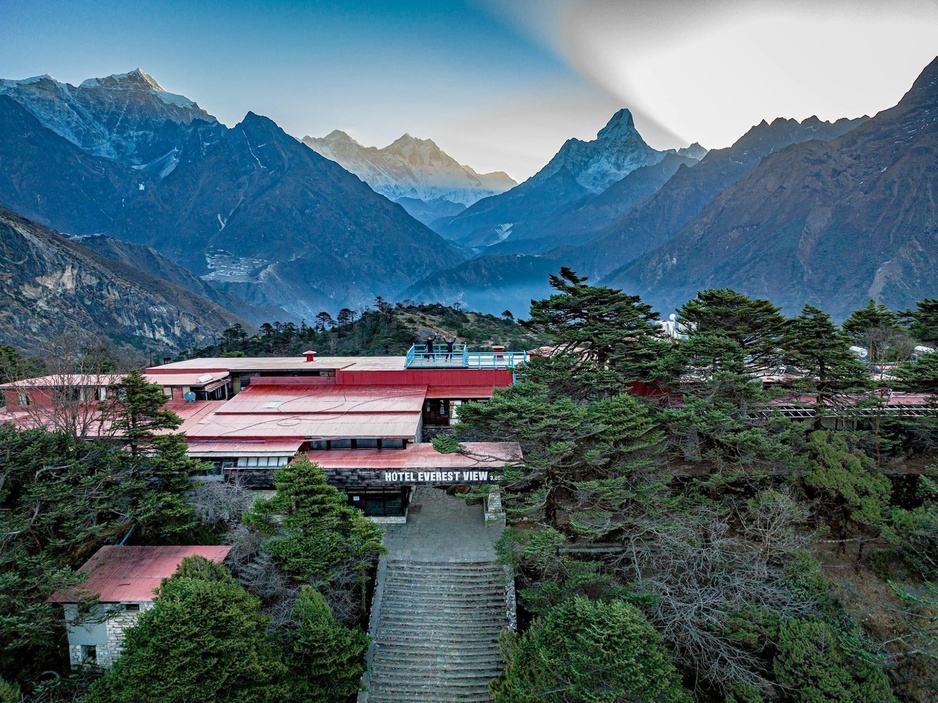
If the aesthetics of the building remind you of Japanese towns, that's no coincidence. Japanese architect Yoshinobu Kumagaya designed the hotel.
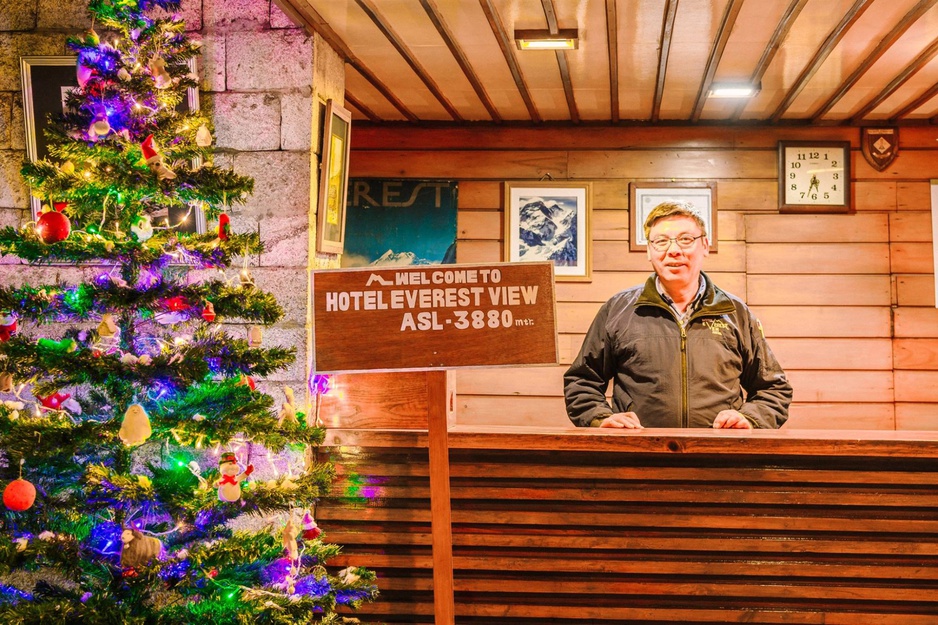
The hotel was opened to thrill-seekers and mountain lovers in 1971.
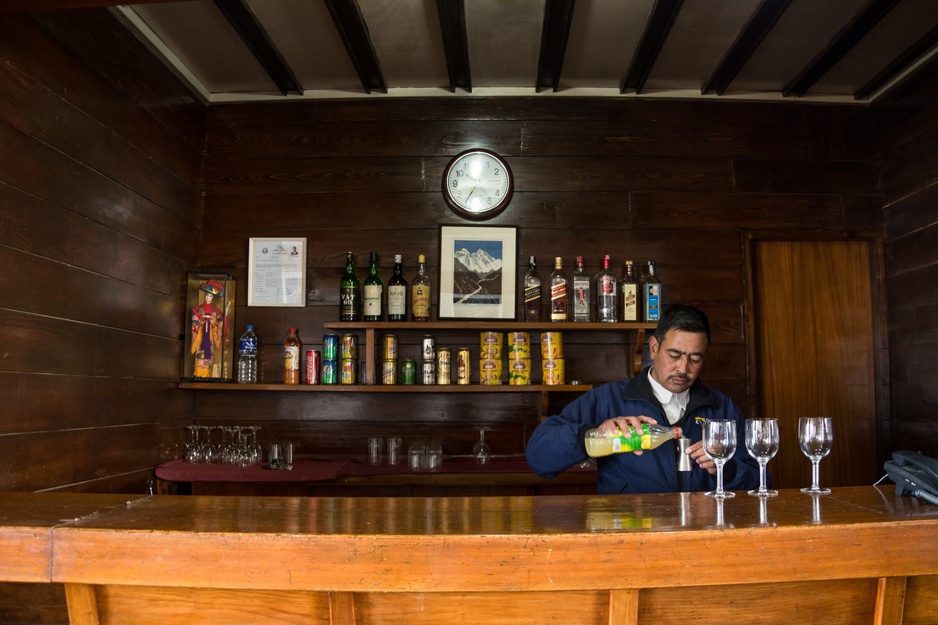
A fully stocked bar high up in the Himalayas with handcrafted cocktails? You got it!
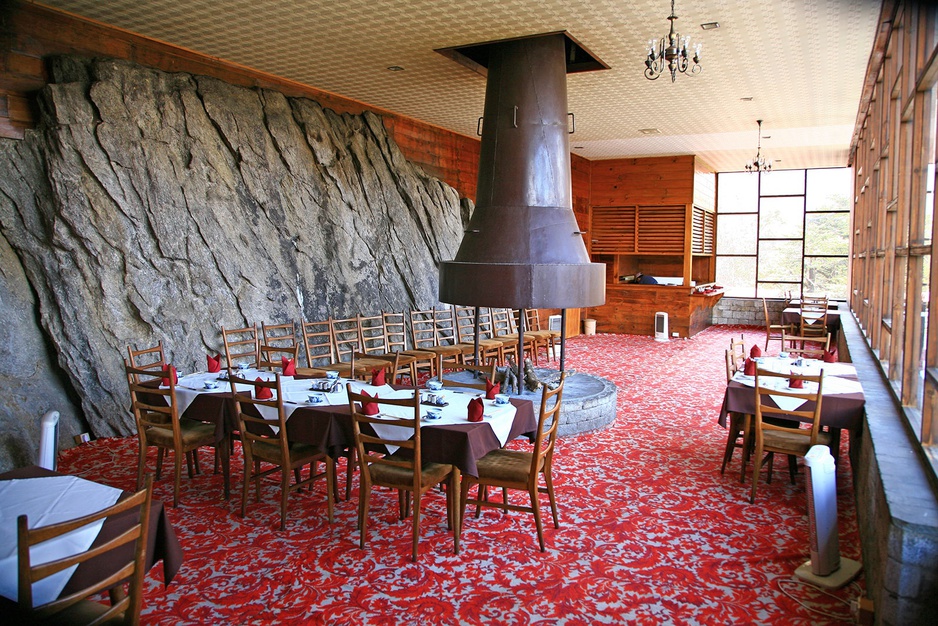
The hotel's restaurant, with a hand-carved stone wall, is open to every visitor, and it offers Japanese and local classics and claims to be the best dining experience in the Khumbu region.
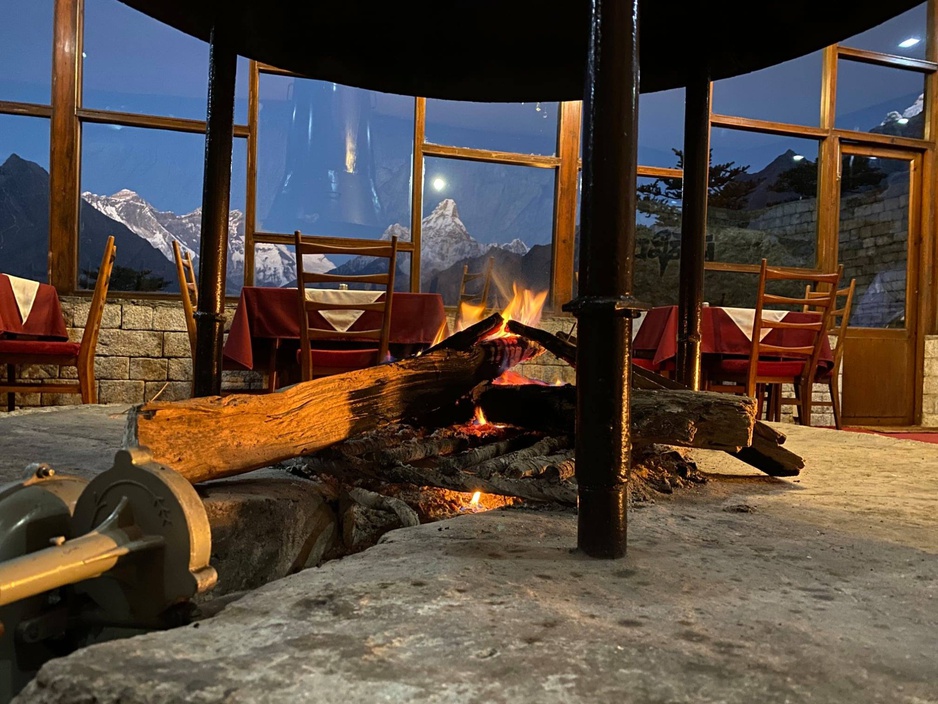
You can sit by the crackling fireplace while having one of the best mountain views in the world.
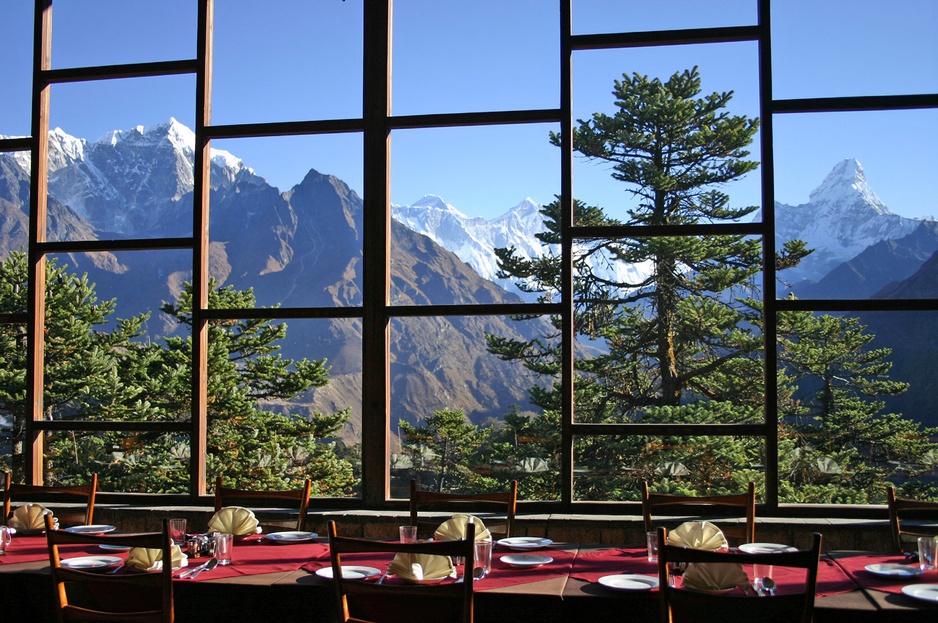
The panorama framed by the windows of the pine trees and snowy mountain peaks is so stunning it could be on wallpaper.
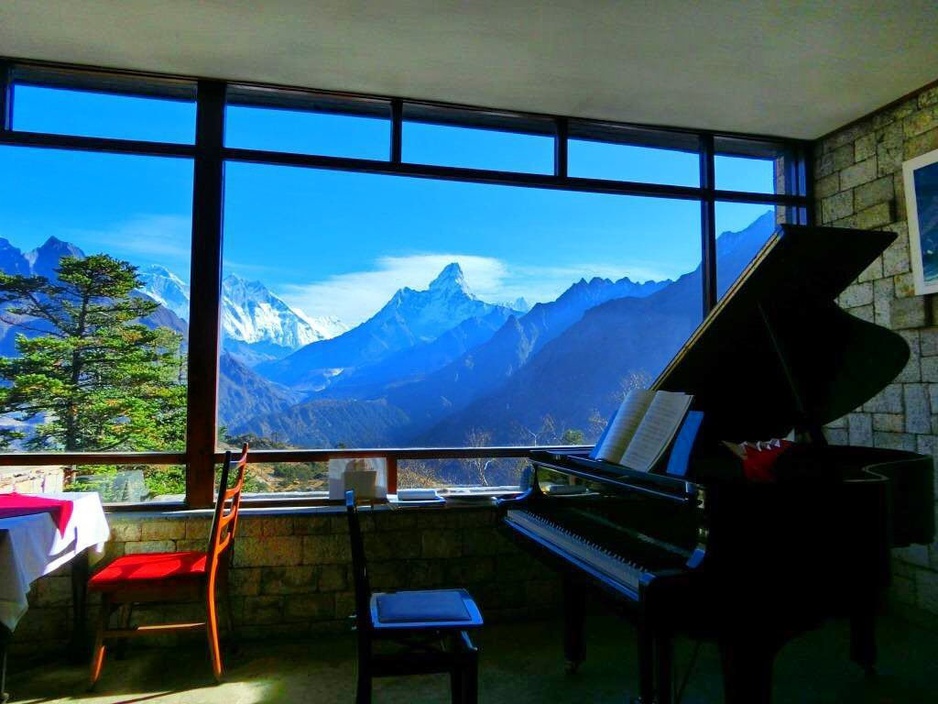
But the calming sound of the fireplace and the insane views can get even better if there is someone to play the piano.
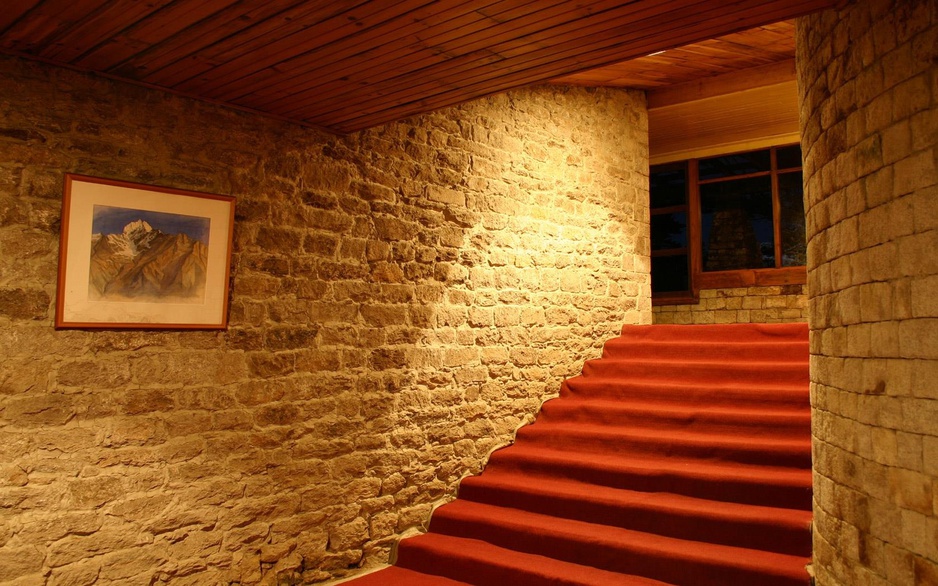
The brick walls of the corridors are decorated with vintage paintings of the Himalayas.
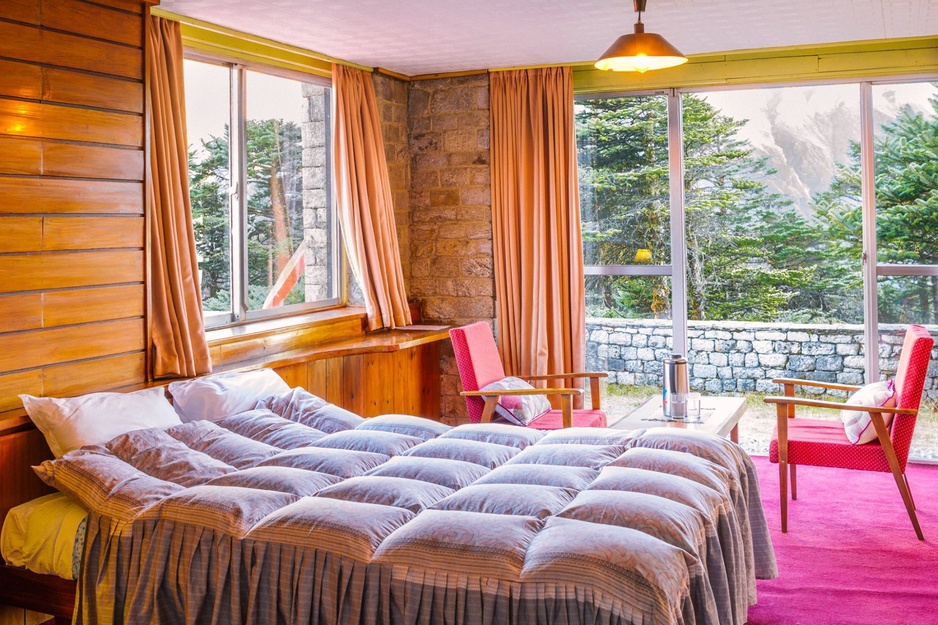
All twelve rooms at Hotel Everest View are equipped with a bathroom and a sitting area.
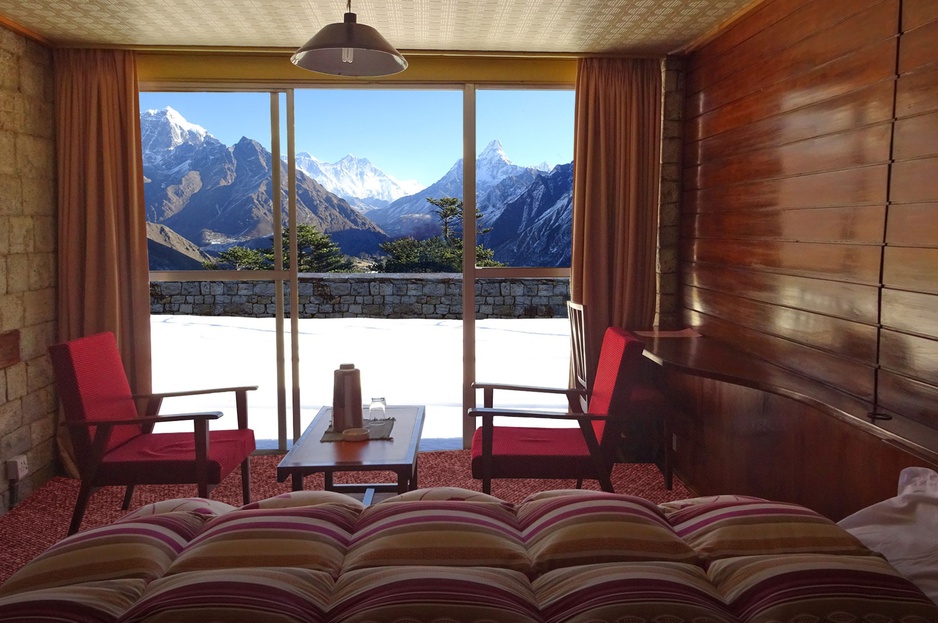
Also, they come with a panoramic view of Mount Everest and the surrounding mountain peaks, including from a direct-access stone-walled balcony.
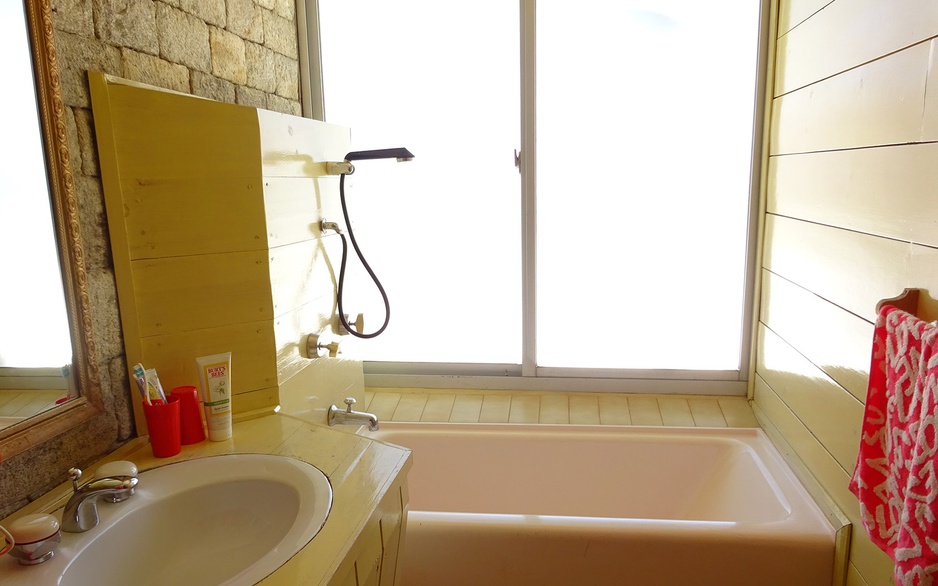
Usually, at this height in traditional mountain shelters, you would be happy to sleep in a shared room on bunk beds in your sleeping bag.
At Hotel Everest View, you sleep in a plush bed in your own room, and the bathroom has a bathtub.
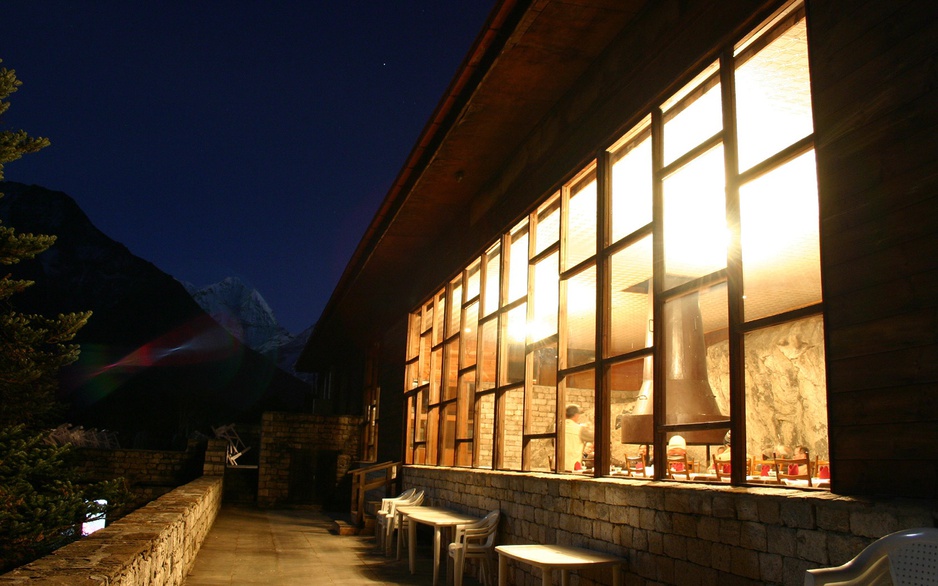
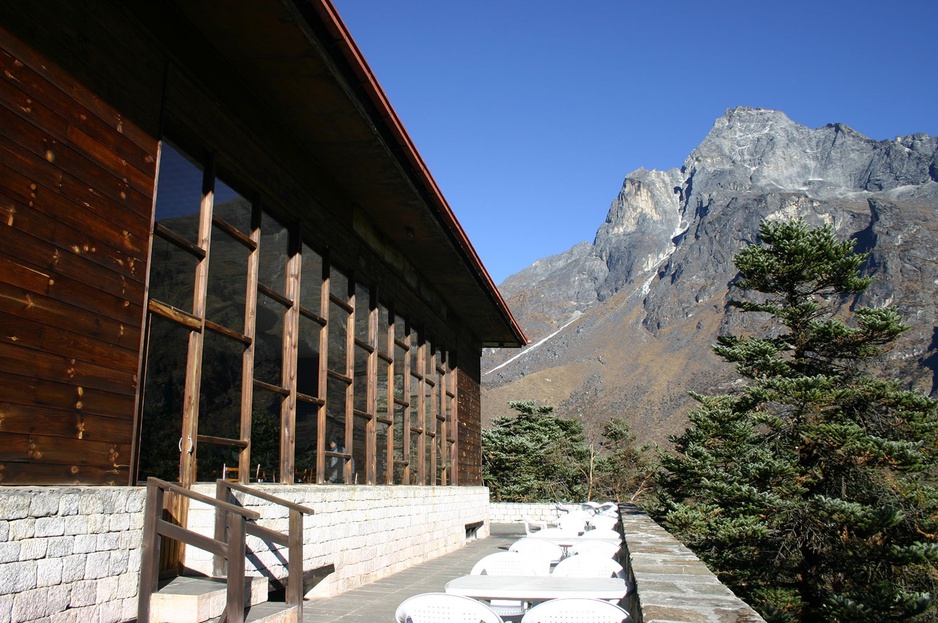
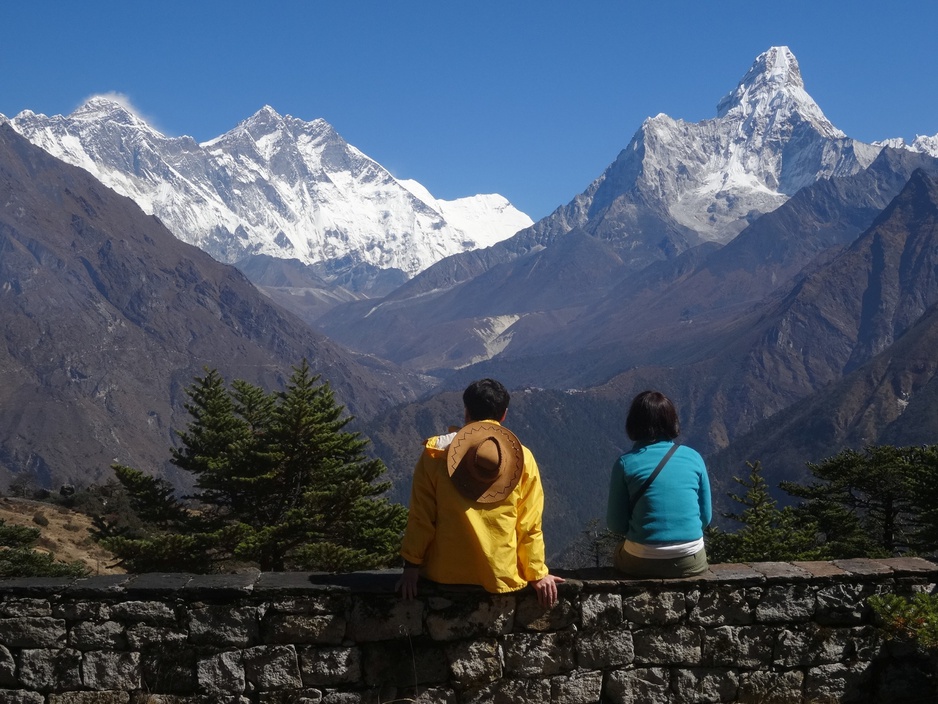
When the weather is clear, you can see the highest peaks in the world, such as Mount Everest, Mount Lhotse, Mount Amadablam, and Mount Nuptse.
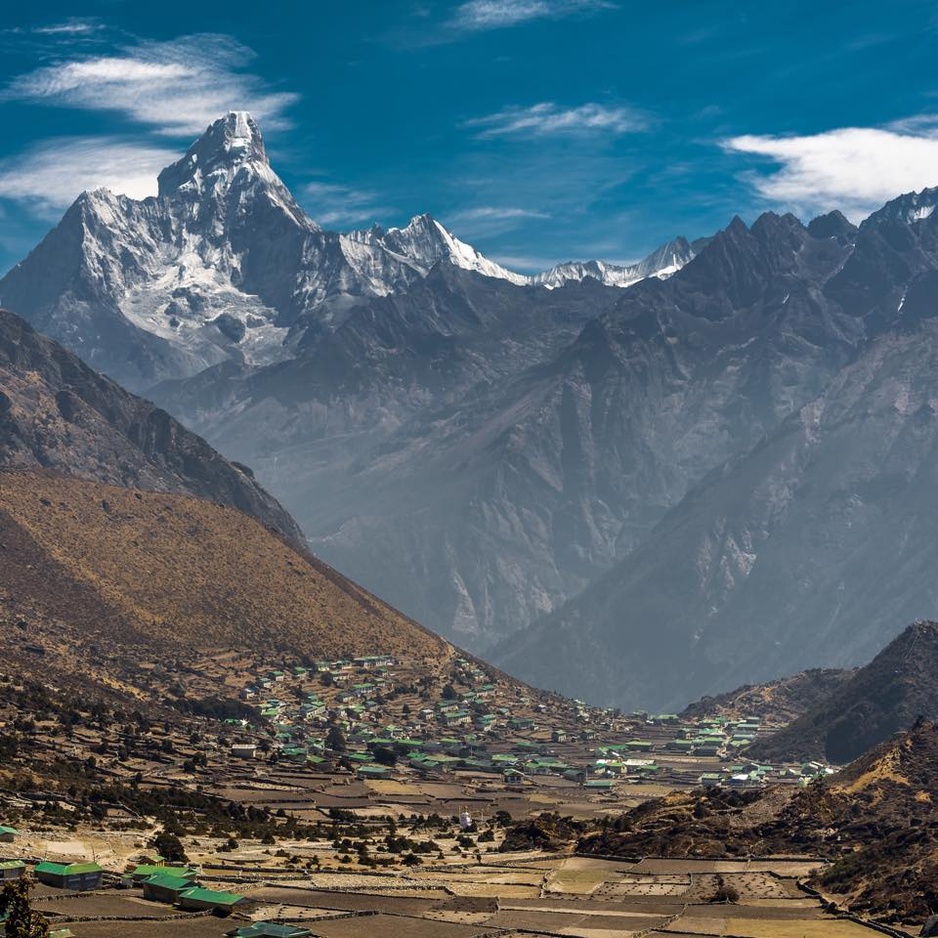
Namche Bazaar, a cozy provincial capital in the middle of the Himalayas, is surrounded by snow-capped mountain peaks.
Thanks to the many visitors who have come here, the formerly sleepy town has grown into a travelers hotspot. You will find shopping streets full of things for hikers, like clothing, snacks, and souvenirs.
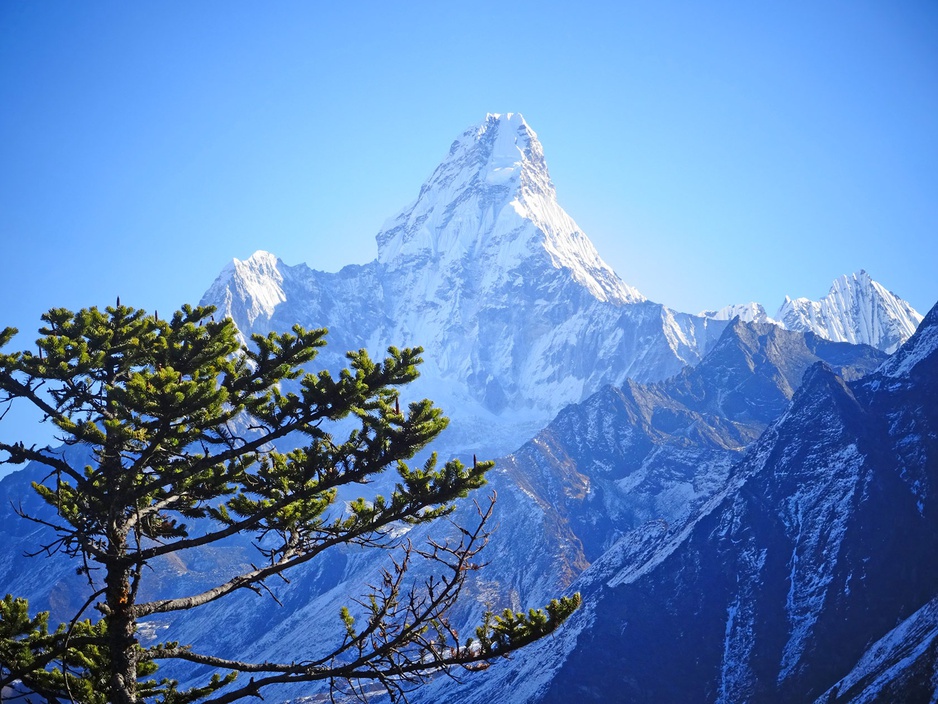
The symptoms of altitude sickness - Important to know before a trip to the Himalayas
Altitude complaints or altitude sickness have everything to do with the lack of oxygen in the air because the higher you go, the less oxygen there is in the air. So as a result, you will breathe faster, and your heart will beat faster.
Because you breathe more quickly and the air is drier, you lose more moisture and have to drink more to keep enough water in your body. In addition, your body makes extra red blood cells to better transport oxygen throughout the body.
If the body does not adapt quickly enough to the altitude, you will suffer from all kinds of ailments: Headache, insomnia, shortness of breath or tightness, nausea, and lack of appetite.
These ailments fall under the heading of 'altitude sickness,' and everyone suffers from this to a greater or lesser extent.
However, in the worst case, you will get "acute altitude sickness" (fluid accumulation in the brain and lungs), which can be fatal.
All you can do then is descend as quickly as possible. The symptoms should then disappear on their own.
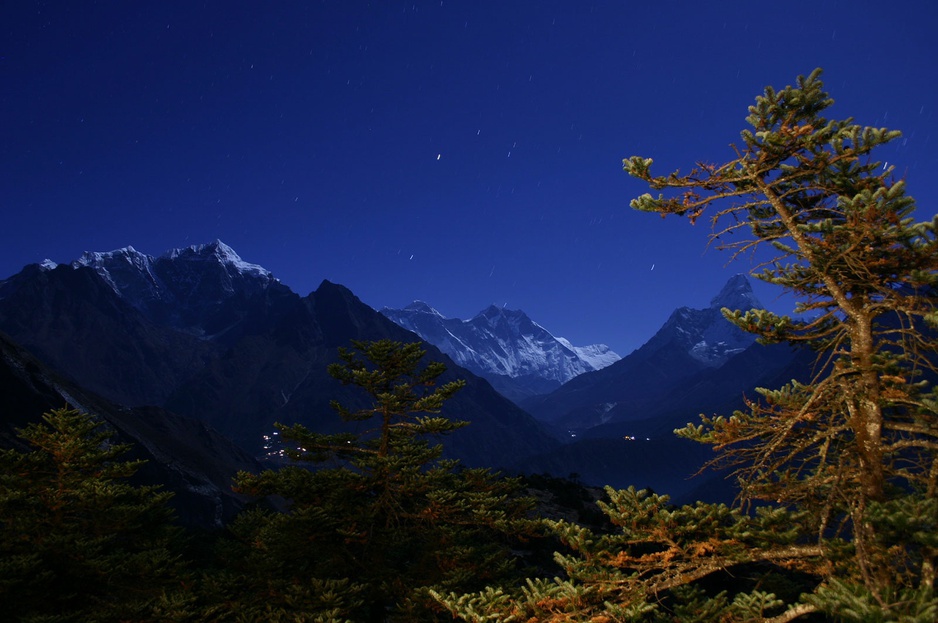
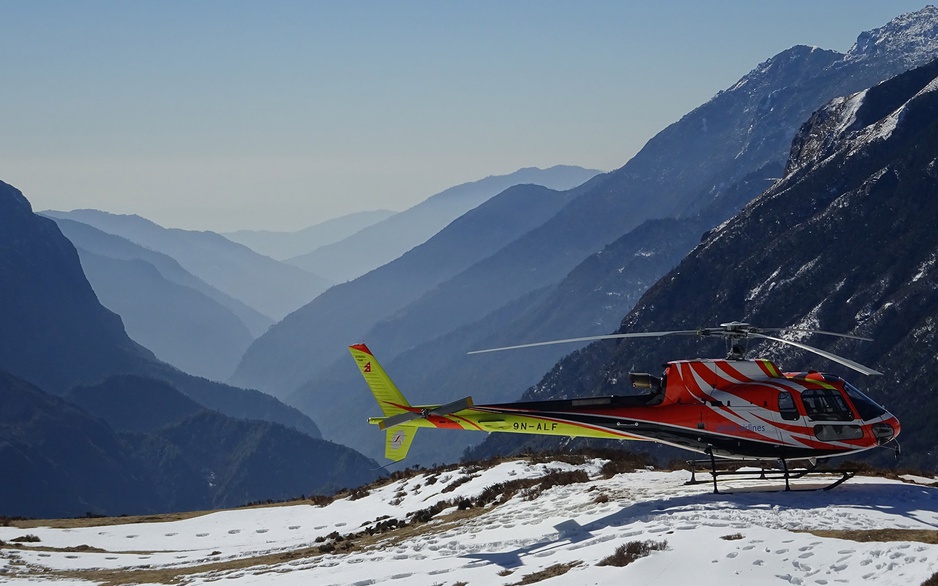
Helicopters fly around with tourists and pick up injured people from the mountain.
You can book a helicopter tour with a stay at Hotel Everest View HERE.
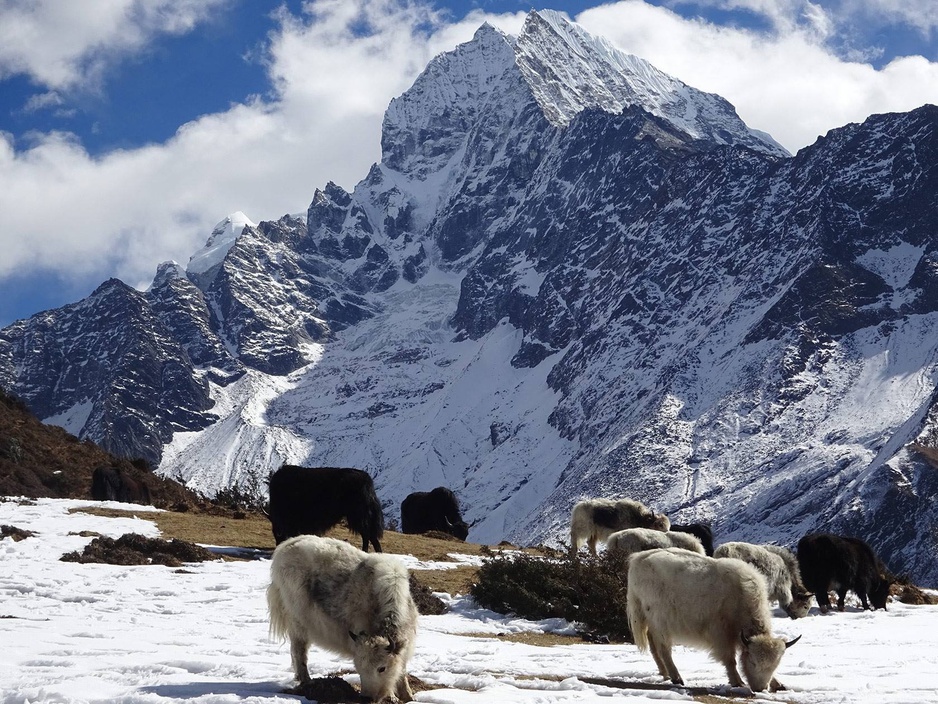
The gorgeous yak is a species of long-haired domesticated cattle found throughout the Himalayan region.
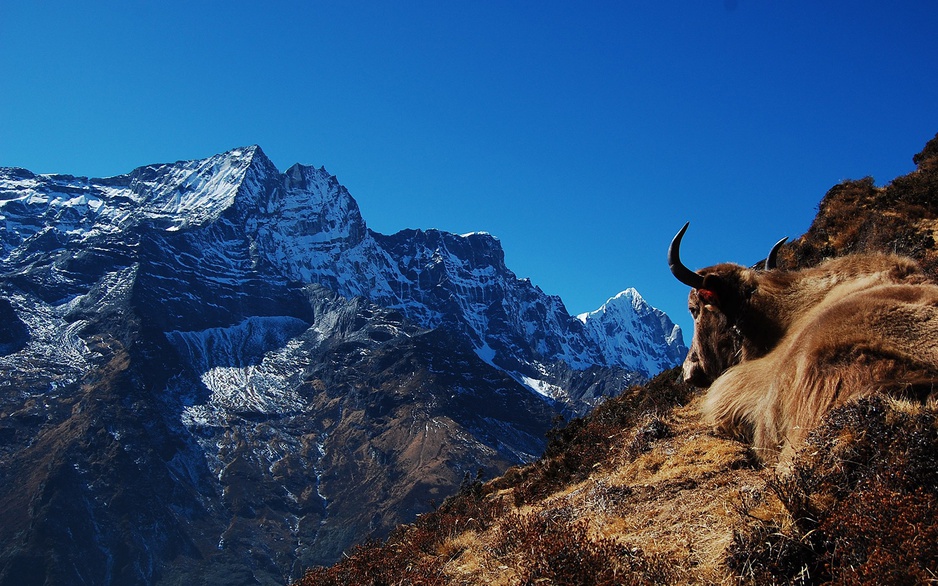
Lukla - Shyangboche Marg, Khumjung 56000, Nepal

